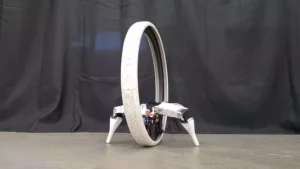China is using electromagnetic gun technology, previously proven to fire projectiles at hypersonic speed, as part of its plan to launch vehicles into space. This effort revitalizes a concept that NASA explored and subsequently abandoned in the 1990s.
Specifically, the goal of CASIC, China’s state-owned aerospace corporation, is to develop a large-scale hypersonic electromagnetic gun capable of sending vehicles into outer space. The ambition is to build a launch platform powerful enough to accelerate an aircraft the size of a Boeing 737 to a speed of Mach 1.6.
Once this speed was reached, the 50-ton aircraft would detach from the platform, activate its engines and launch into space, reaching speeds seven times faster than the speed of sound.





Electromagnetic cannons for aircraft at hypersonic speed
The main motivation behind this innovative launch technique is the significant reduction in fuel usage and, consequently, in the costs associated with sending payloads into space. With a cost target of $60 per kg of payload, China is looking to drastically reduce costs compared to the $3,000 per kg cost of a launch using a SpaceX Falcon 9.
Since 2016, the Tengyun project has been under development, during which time CASIC has erected a 2 km long test track in Datong, Shanxi province, considered the world’s most advanced high-speed magnetic levitation technology. With expansion plans, this track could allow speeds of up to 5,000 km/h to be reached. In parallel, in Jinan, Shandong, the Chinese Academy of Sciences has launched a similar facility to experiment with electromagnetic propulsion at extremely high speeds.
China is not a pioneer in this technology
China is not the first country to investigate space launches using electromagnetic technology, a concept that has been contemplated since the Cold War. NASA, in the 1990s, attempted a similar project that sought to accelerate the space shuttle to 700 km/h using a 10-meter test track, but the project was discontinued due to technical and financial problems.
Although the technology found an alternative use in launching aircraft from the aircraft carrier USS Gerald R. Ford, it faced criticism for its low efficiency compared to traditional steam catapults. However, Chinese scientists are optimistic about the feasibility of their rail gun because of the impressive launch speeds it promises.
Importantly, exploration of this technology could not only revolutionize space transportation, but also has the potential to influence other areas of human mobility and cargo. For example, it could lead to new methods of ultra-fast ground transportation, opening the door to an era of travel at unprecedented speeds.
Don’t miss any of our posts and follow us on social media!
Inspenet.com YouTube LinkedIn Facebook Instagram X
Source: www.xataka.com
Photo: generated with AI













